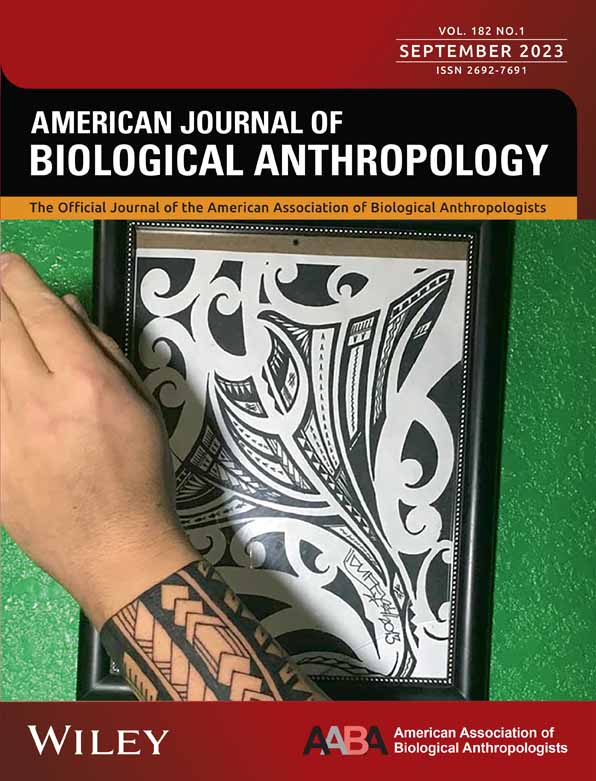Ver ítem
- xmlui.general.dspace_homeCentros e Institutos de InvestigaciónCICVyA. Centro de Investigación en Ciencias Veterinarias y AgronómicasInstituto de BiotecnologíaArtículos científicosxmlui.ArtifactBrowser.ItemViewer.trail
- Inicio
- Centros e Institutos de Investigación
- CICVyA. Centro de Investigación en Ciencias Veterinarias y Agronómicas
- Instituto de Biotecnología
- Artículos científicos
- Ver ítem
Novel B2 mitogenomes from Continental southern Patagonia's Late Holocene : New insights into the peopling of the Southern Cone = Nuevos mitogenomas B2 del holoceno tardío del sur de la Patagonia Continental : Nuevos hallazgos sobre el poblamiento del Cono Sur
Resumen
Objectives: The main aim of this study is to discuss the migratory processes and peopling dynamics that shaped the genetic variability of populations during the settlement of the Southern Cone, through the analysis of complete mitogenomes of individuals from southern Patagonia.
Materials and Methods: Complete mitogenomes were sequenced through massively parallel sequencing from two late Holocene individuals (SAC 1-1-3 and SAC 1-1-4) buried in the same
[ver mas...]
Objectives: The main aim of this study is to discuss the migratory processes and peopling dynamics that shaped the genetic variability of populations during the settlement of the Southern Cone, through the analysis of complete mitogenomes of individuals from southern Patagonia.
Materials and Methods: Complete mitogenomes were sequenced through massively parallel sequencing from two late Holocene individuals (SAC 1-1-3 and SAC 1-1-4) buried in the same chenque at Salitroso Lake Basin (Santa Cruz province, Argentina). To evaluate matrilineal phylogenetic affinities with other haplotypes, maximum likelihood and Bayesian phylogenetic reconstructions were performed, as well as a haplotype median-joining network.
Results: The mitogenomes were assigned to haplogroups B2 and B2b, exhibiting an average depth of 54X and 89X (≥1X coverage of 98.6% and 100%), and a high number of nucleotide differences among them. The phylogenetic analyses showed a relatively close relationship between the haplotype found in SAC 1-1-4 and those retrieved from a Middle Holocene individual from Laguna Chica (Buenos Aires province), and from a group of individuals from the Peruvian coast. For the SAC 1-1-3, no clear affiliations to any other haplotype were established.
Discussion: The large divergence between the haplotypes presented in this study suggests either a highly variable founder gene pool, or a later enrichment by frequent biological contact with other populations. Our results underline the persistence of genetic signals related to the first waves of peopling in South America, suggesting that the regional settlement of the southern end of the continent has been much more complex than initially thought.
[Cerrar]

Autor
Arencibia, Valeria;
Muñoz Hidalgo, Marianne Graziel;
Crespo, Cristian;
Russo, M. Gabriela;
Vera, Pablo Alfredo;
Lia, Veronica Viviana;
García Guraieb, Solana;
Goñi, Rafael A.;
Avena, Sergio;
Puebla, Andrea Fabiana;
Dejean, Cristina;
Fuente
American Journal of Biological Anthropology (First published: 07 August 2023)
Fecha
2023-08
Editorial
Wiley
ISSN
2692-7691
Formato
pdf
Tipo de documento
artículo
Palabras Claves
Derechos de acceso
Restringido
 Excepto donde se diga explicitamente, este item se publica bajo la siguiente descripción: Creative Commons Attribution-NonCommercial-ShareAlike 2.5 Unported (CC BY-NC-SA 2.5)
Excepto donde se diga explicitamente, este item se publica bajo la siguiente descripción: Creative Commons Attribution-NonCommercial-ShareAlike 2.5 Unported (CC BY-NC-SA 2.5)


